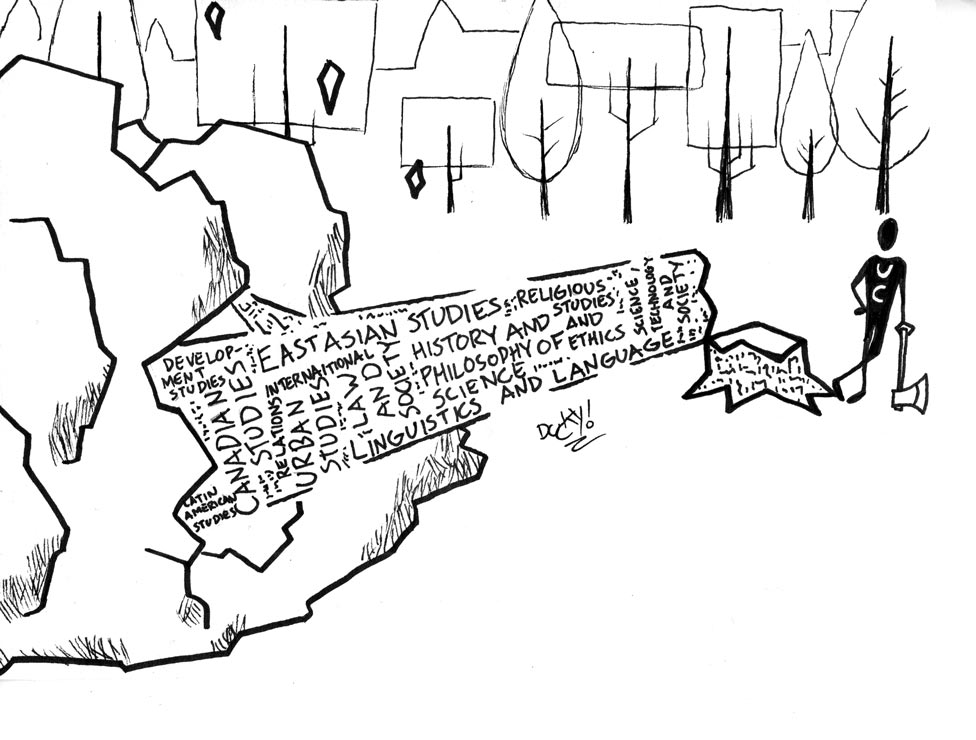
Program changes leave students in the dark
By Leah Schmidt, September 25 2014 —
Interdisciplinary programs are unique. They combine multiple disciplines to create a distinct academic viewpoint and prevent students from taking multiple classes with the same academic perspectives.
This rhetoric is backed by administrative goals. Interdisciplinary programs are a major part of the Eyes High plan and are outlined in the university’s strategic plans.
Over four years ago, I began a degree in international relations and women’s studies — both interdisciplinary degrees. It should have been a safe path. But poor administrative decisions meant that the program choices of thousands of students were thrown to the curb.
Before the faculties of social sciences, humanities, communication and culture and fine arts merged into the faculty of arts in 2010, interdisciplinary programs didn’t report to specific departments.
Before the faculty merger, programs weren’t unfunded or unaccountable. Instead, interdisciplinary programs had a budget large enough to hire dedicated staff for each program and to pay professors from other departments to teach in the area.
That autonomy is now gone. Interdisciplinary programs like development studies are now attached to other departments like archaeology. The switch to departmentalized programming was based on the assumption that these departments would take financial and administrative ownership of the programs.
Now professors and administrators with no experience in certain fields make decisions for interdisciplinary programs. This includes which professors are hired, when and what classes are offered and the specifics of degree requirements.
Interdisciplinary programs are highly specialized and require detailed knowledge of the subject matter. An interdisciplinary program like urban studies has a lot in common with geography, but it should be controlled by someone who specializes in that particular field, not just something that’s close enough.
There are at least four interdisciplinary programs that have no department. A program like women’s studies reports to the associate dean of teaching and learning, instead of an academic with experience in the field.
Although these programs are part of the U of C’s strategic planning, that doesn’t manifest in quality programming. Like a lot of initiatives on campus, making sure administrative decisions look good under the Eyes High banner seems to be more important than creating quality programs.
Surprised? Probably, because only a handful of upper-level administrators seem to know which department is responsible for which program. Unless you have time to ask about new administrative structures in person, this information will not be made clear to you.
Lack of consultation with students is a breach of trust. Administration made changes that degraded the quality of students’ education without informing them. If administration won’t liaison with students on administrative issues, how can we trust them on major issues like tuition and fees?
Students deserve to know what’s happening in our programs, especially when we’re paying thousands of dollars to study here. It’s insulting to flaunt Eyes High at every turn and then not follow through with the promises of quality interdisciplinary programs and research.
If administration is going to make changes to our programs, they should tell us. All we expect from interdisciplinary programs is what we were promised. Administration needs to deliver.
